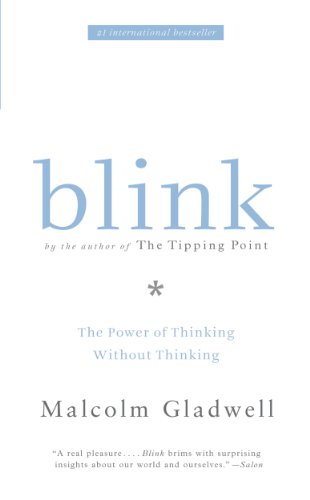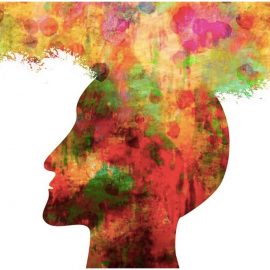

This article is an excerpt from the Shortform summary of "Blink" by Malcolm Gladwell. Shortform has the world's best summaries of books you should be reading.
Like this article? Sign up for a free trial here .
What do you do when you want to remember something you see? Do you write it down? Describe it to someone else? Both these tactics can lead to verbal overshadowing…and that’s a problem.
Verbal overshadowing is the tendency of language to diminish your memory of visual information. It’s a phenomenon where explaining your thought processes make you worse at whatever you’re trying to explain.
Learn why verbal overshadowing is bad and what you can do instead to remember visual information.
The Problem With Verbal Overshadowing
Verbal overshadowing is a type of rationalization. Sometimes, our rationalizations are just inaccurate. Other times, they actually harm our ability to make smart decisions.
Our rational minds (and verbal overshadowing in particular) can overpower our unconscious minds, to our detriment. Explaining our processes can make us worse at whatever we’re trying to explain. Attempting to explain the mysterious takes away some of the mystery’s power. This is verbal overshadowing.
Insight, another way of thinking about snap judgments, is fragile. We think of insight like a lightbulb, but it’s more like a candle in danger of being snuffed out by one gentle sigh. Verbal overshadowing happens when we snuff out the candle of insight by talking about it.
Language and Face Recognition
Language is the primary tool of the rational mind. Using language (and therefore activating our rational minds) when a task is better completed by the unconscious mind can snuff out insights, leading to verbal overshadowing.
Let’s look at an example of verbal overshadowing: when we recognize someone, that recognition comes from our unconscious. We’re not consciously looking at the person’s eyes, nose, or hair, and comparing those features to a mental list of the eyes and noses and hair of people we know. Recognition is often instant. Either you recognize someone or you don’t.
Let’s see what happens when we try to turn this into a conscious process. Think about any stranger you saw today, maybe the barista who made your morning coffee.
Suppose someone asked you to describe him or her in as much detail as possible, including facial features, hair color, clothing, and jewelry. (This is the “verbal” element of verbal overshadowing.)
If you had to pick this person out of a lineup, you’d do much worse after describing him or her than before. The act of describing erases the image from your mind by pulling it forward from the unconscious to the conscious.
This is verbal overshadowing. Instead of remembering what you saw, you’re remembering your description, which, due to the limits of language, will always be less accurate than your visual memory. When you explain yourself, you override what you’re explaining. Verbal overshadowing is a problem.
Language and Insight Puzzles
Verbal overshadowing also hurts our ability to solve insight puzzles.
There are two general kinds of puzzles:
- You can only solve insight puzzles in an “aha” moment. The answer just comes to you, from your unconscious mind.
- You can solve logic puzzles systematically, through reason. The answer comes from the efforts of your conscious mind.
When we attempt to solve logic puzzles, explaining our thought processes can actually help us better understand the problem. This is not verbal overshadowing. We’re using language, but it doesn’t overshadow the process.
But when we attempt to solve insight puzzles, explaining our processes hurts us. One study found that, given a sheet of insight puzzles, those asked to explain their strategies solved 30% fewer problems than those who weren’t asked to explain themselves. This is verbal overshadowing.
The Problem With Rationalizing
Verbal overshadowing applies to visual memories and insight problems, but it’s just one type of rationalizing, which uses language to explain something that can’t be explained.
We’re often unable to explain why or how we arrive at a snap judgment, even if that judgment is correct. We know something, but we don’t know how we know it, and that’s frustrating. It’s hard to trust something that you can’t explain.
Knowledge without a rational explanation is a double-edged sword. This type of knowledge can be the truest, deepest kind, but it can also harbor biases.
- We need to accept that we may never know why we make the decisions we do. We can’t rationalize snap judgments.
- We need to accept that our snap judgments are far more susceptible to being influenced by our environment than we think.
Rationalizing
Let’s look at the meaning of rationalizing: rationalizing is what we do when we try to explain our actions or thoughts with reasons that aren’t accurate. We attempt to make our decisions seem more rational.
We tend to feel that there’s a rational reason for everything we do. When we don’t know why we’ve made a certain decision, we make something up. We don’t lie on purpose. We actually believe the lies our conscious minds construct to explain the decisions of the unconscious mind. But you can’t rationalize a decision that’s inherently irrational. As with verbal overshadowing, using language to describe and explain can cause problems.
There are two problems with rationalizing our snap judgments:
- Rationalizing leads to inaccurate explanations of our decisions.
- Rationalizing leads to bad decision making and decreased performance.
Rationalizing Leads to Inaccurate Explanations
Two rationalization examples show us how far our rational explanations can veer from the truth.
Rationalization Example #1: The Problem of the Two Ropes
A psychologist hung two ropes from the ceiling, far enough apart that if you held one rope in your hand, you couldn’t reach the other. There were various tools and pieces of furniture in the room as well. He asked volunteers to come up with as many ways to tie the two ropes together as they could.
There were four ways to tie the ropes. Most people discovered the first three pretty easily.
1. Stretch one rope as close to the other as possible, then anchor it with a chair. Go get the other rope and tie the ends together.
2. Tie an extension cord to one rope. This makes it long enough for you to hold while grabbing the other rope. Tie the two ropes together.
3. Take one rope, then use a pole to pull the other rope toward you. Tie the ends together.
Most people struggled to find the fourth solution: Swing one rope like a pendulum, then grab the other rope. Catch the swinging rope and tie the ends together.
For the volunteers having trouble producing this fourth solution, the psychologist gave their unconscious minds a suggestion. He walked across the room, casually bumping into one of the ropes, causing it to swing. The move was so subtle that volunteers’ unconscious minds picked up on the suggestion while their conscious minds didn’t. After that, most people came up with the fourth solution.
Rationalizing Unconscious Decisions
When asked to explain how they came up with the fourth solution, volunteers said things like:
- “I realized that attaching something heavy to it would make the rope swing.”
- “I think I learned about a similar problem in a physics course.”
- “I suddenly had the vision of monkeys swinging among the branches. The solution just came to me.”
These people weren’t lying. They were just automatically producing explanations that their conscious brains found most plausible. They had no idea the psychologist had given them the answer when he bumped the rope. This is just like verbal overshadowing – putting words to concepts makes you confused about how your brain works.
In this example, there’s nothing wrong with rationalizing an unconscious decision, except that the reasoning is faulty.
Rationalization Example #2: The Problem with Rationalizing Snap Judgments in Sports
The Rationalization Problem for Athletes
Athletes are really bad at explaining how and why they play the way they do. This is because in the middle of a play, there’s not enough time to make decisions consciously. Many of a great athlete’s game-day decisions are made unconsciously.
But interviewers and fans want to know how athletes do the incredible things they do. So athletes tell them what they feel like they do. This doesn’t always correspond to reality. You can’t explain a decision that’s not rational.
For instance, baseball great Ted Williams, one of the best hitters ever, would repeatedly say that he could watch the ball all the way until it made contact with his bat. But this is impossible: The ball moves far too quickly and is too close to be seen when the hitter hits it. When confronted with this fact, Williams admitted that it must just seem like he could “look the ball onto the bat.”
The Rationalization Problem for Coaches
This isn’t only a problem for athletes. People pay coaches thousands to teach them the secrets of the pros. But what if those secrets are unexplainable and, therefore, unteachable?
World-class tennis coach Vic Braden can predict when a professional is about to double-fault, or miss two serves in a row. Double-faulting is extremely rare in professional tennis.
To Braden’s frustration, he can’t figure out how he knows a player is about to double-fault. He just knows. To attempt to understand what his unconscious brain is catching that his conscious brain isn’t, Braden videotapes players and breaks down the serve, frame by frame. If he could uncover the precursors to a double-fault, he could help athletes avoid it. Apparently, he has yet to discover the key.
How to Counter the Problems of Verbal Overshadowing and Rationalization
You have two options to stop rationalizing and verbal overshadowing from getting in the way of good decisions.
Option #1: Don’t try to explain your snap decisions. Honor the mysteries of the unconscious mind and admit that you don’t always have the answers, even those pertaining to your own choices. Once you’ve created a story to explain an unconscious decision, that story is hard to shake. We believe the stories we tell ourselves and others.
Option #2: Like tennis coach Vic Braden, you could attempt to enhance your conscious perception through technology that slows down the flow of information. This gives your conscious mind a chance to catch what normally flies past it. But this isn’t a reliable method.
———End of Preview———

Like what you just read? Read the rest of the world's best summary of "Blink" at Shortform . Learn the book's critical concepts in 20 minutes or less .
Here's what you'll find in our full Blink summary :
- How you can tell if a marriage will fail, within 3 minutes
- Why your first impressions are usually surprisingly accurate
- The dark side to making first impressions, and how to avoid the,






